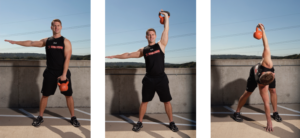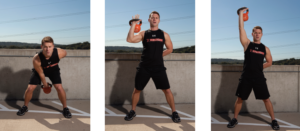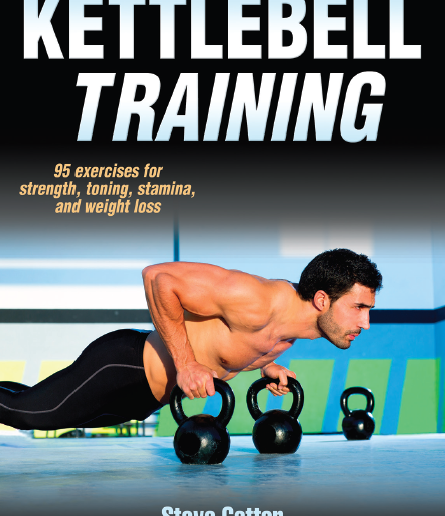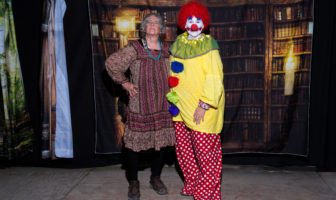Keeping fit with a storied piece of equipment.
By Ryan Nail, Photos by Rudy Arocha


As the founder of the International Kettlebell and Fitness Federation (IKFF), Cotter is credited for bringing kettlebells back in to the fitness circuit and making it fun and popular. I have been in the fitness industry for almost seven years now, and after reading Kettlebell Training, I learned more about kettlebells than I ever knew existed. I highly recommend this book if you’ve ever wanted to learn how to incorporate kettlebells in your fitness regime, if you want to learn about the diversity of kettlebells or if you use kettlebells but want to perfect the craft and learn new exercises.
Steve Cotter started out in martial arts and became disciplined in the training aspect. As he won contact tournaments, he wanted to know the science behind training, so he got a degree in kinesiology and started teaching classes. As he started his search for the most efficient way to train, he ran in to an oldie but goodie: the kettlebell. Cotter started mixing traditional kettlebell exercises with his martial arts training. He then created kettlebell DVDs and the popularity for kettlebells began to grow. The kettlebell started to take popularity through the web and only grew from there.
Cotter’s goal has been to educate the masses about fitness and kettlebells, so he developed the IKFF certifications. Cotter does seminars throughout the world teaching people how to use kettlebells while optimizing their fitness through gaining strength and power and integrating mind and body in to their fitness regimes. Cotter has worked with NFL teams and the U .S. Navy Seals.
Through his efforts to r each the masses, he teamed up with Human Kinetics and created his latest book, Kettlebell Training. I asked him what some of his favorite functional kettlebell exercises are and he replied that he likes to keep it simple with the snatch and the clean-and-jerk, otherwise known as the long cycle. I also asked him what his favorite core exercises were using the kettlebell and he likes doing a heavy front squat using two kettlebells, the overhead squat and the windmill. As a fitness expert, I highly recommend reading this book to take your fitness routine to a new level. If you would like to know more about what Steve Cotter is up to or about the IKFF, visit ikff.com or pick up the new book today!

The Windmill
Keep toes angled or toes forward stance. Clean a kettlebell to the chest with your right arm and feet pointing forward, shoulder-width apart. Then pivot on your heels to the left, approximately 45 degrees. The left foot is now the front and the right foot is the rear foot. Raise your right arm overhead with the bicep touching your ear and turn your left palm forward so that the back of your left hand is against the inside of your left thigh. Shift your weight maximally on the rear leg throughout the windmill movement. Do not shift to the forward leg at any portion of the movement. Now look up to the high hand and as you look up, rotate your upper torso toward the hand as such that you feel your chest lifting and facing toward the ceiling. Lower yourself by pressing your rear hip out to the side and lift up by pulling with the rear hip to return to start

Snatch
The kettlebell is swung above the head and the arm is fully extended as the kettlebell reaches overhead.

Heavy Front Squat
Clean two kettlebells to your shoulders. Clean the kettlebells to your shoulders by extending through the legs and hips as you pull the kettlebells toward your shoulders. Rotate your wrists as you do so. Looking straight ahead at all times, squat as low as you can and pause at the bottom. As you squat down, push your knees out. You should squat between your legs, keeping an upright torso, with your head and chest up. Then rise back up by driving through your heels and repeat.

Double Overhead Squat
Set your stance like a heavy squat and then press your kettlebells in the air as you squat. Keep your chest lifted and shoulder blades pinched together in your back. Squat by sitting your hips back and down. Drive up by pressing your feet into the ground and return to the standing position.

Clean and Jerk
A kettlebell lift that is performed in three phases: clean kettlebells to chest, jerk kettlebells overhead and drop kettlebells into backswing position. These three movements are repeated continuously throughout the set. Also called long cycles.





